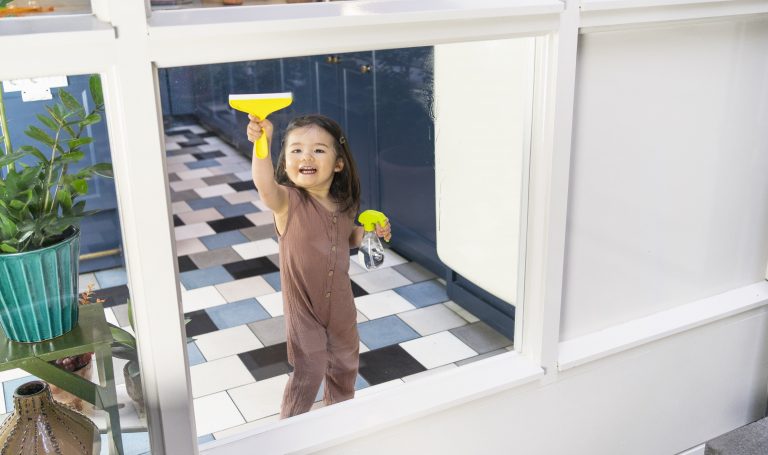How to help your toddler cope with anxiety about COVID-19

Many parents and caregivers are struggling to help children navigate this complicated time. Recognizing signs of anxiety in your toddler is the first step. It can show up as a physical ailment, like a stomach ache or headache, or in behavior like moodiness, tantrums, clinginess, and sleep issues. The good news is that once you have identified symptoms of anxiety in your child, you can take steps to ease them ❤️
Conversation is key
- Try to take care of your own anxiety before you talk with your toddler. Educate yourself with solid facts from reliable sources and find people who can support your adult experience with the pandemic.
- Ask your toddler questions and let them talk. Let them feel their feelings and be sad or angry about their playdates or school being canceled. Reassure them that it’s okay to feel disappointed or lonely; it’s also okay to enjoy having the whole family in one place, or delight in more attention than usual from older siblings.
- Give your toddler some responsibility and an opportunity to help. Let them know that by washing their hands, avoiding close contact with people who don’t live with them, and staying home, they are making a difference ❤️
You can also consider some of these other parenting tips during COVID-19 to help ease your toddler’s anxiety
- Structure the day for them. Rituals and routines are a great source of comfort to toddlers, helping them recognize patterns in their day and learn to anticipate what’s happening next. This can be particularly reassuring during an unsettling time when so many other things have changed.

- Try calming activities like yoga or giving your child a gentle massage before bedtime.
- Read books about other children experiencing anxiety—either in general or around the pandemic in particular. “Doing My Part,” a Lovevery e-book about a young child exploring their feelings about COVID-19, is a good place to start. Here are a few more.
Tap into your toddler’s natural desire to play. As Fred Rogers famously said, “It’s the things we play with and the people who help us play that make a great difference in our lives.”
- Make a feelings chart or picture to help your child identify what they are feeling. Get a dance party going. Moving to different kinds of music is a great way to help your toddler process and release big feelings. Try experimenting with different tempos and moods and asking them what feels the best. Dance along with them and release some of your own stress at the same time.

- Pretend play with a stuffed animal is at that sweet-spot intersection of fun, comfort, and control. Your child can give their stuffed animal a mask to wear, help it “wash paws,” and teach it to air-hug other stuffed animal friends.
Keep reading

22 - 24 Months
25 - 27 Months
28 - 30 Months
31 - 33 Months
34 - 36 Months
Best Montessori and learning toys for 2 year olds
The best toys for 2 year olds support emerging independence and sense of identity. They also give your child opportunities for fine and gross motor practice, problem-solving, practical life skills, and more.

25 - 27 Months
28 - 30 Months
31 - 33 Months
34 - 36 Months
Preparing your child (and yourself!) for preschool
The transition to preschool can be equal parts exciting and nerve-wracking for both you and your child. Here's how to support them before their first day.

19 - 21 Months
22 - 24 Months
25 - 27 Months
28 - 30 Months
31 - 33 Months
34 - 36 Months
What kind of chores are right for my child?
Children as young as 18 months can start taking on regular household responsibilities. These will be simple and straightforward, like wiping up spills or helping set the table, and will require modeling and patience from you.
